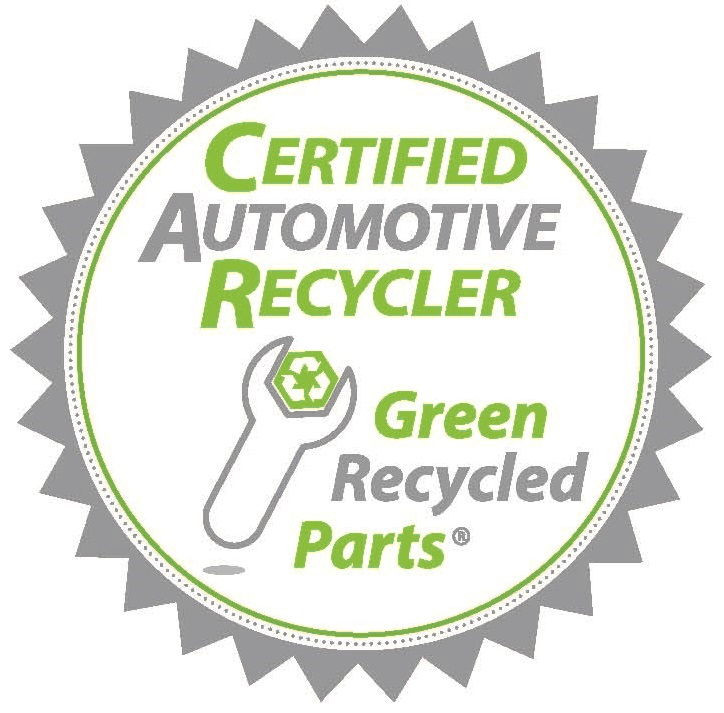The fact sheets are designed to assist automotive recyclers with operating their businesses and managing their wastes in compliance with the environmental laws in Iowa. ECAR tries to provides timely and essential information on this topic, but be aware that other items, such as local regulations and recent changes, may apply. Read the Disclaimer. To view other Iowa FACT SHEETS return to the ECAR Virtual Tour.
While we have tried to present a summary of the essential information on this topic, you should be aware that other items, such as local regulations, may apply to you. Please read the disclaimer.
What You Need to Know
Antifreeze can pollute groundwater, surface water and drinking water supplies if dumped, spilled or leaked, and is a serious health hazard to humans or animals if ingested. Antifreeze is made up of ethylene glycol that is a poisonous colorless, sweet-tasting chemical that causes nerve damage if swallowed and antifreeze with propylene glycol which is less toxic. While in an engine, antifreeze can become contaminated with lead or fuel to the point where it may need to be managed as a hazardous waste. Antifreeze is one of the automotive waste that must have a hazardous waste identification made by laboratory testing before determining a disposal method.
Regulations
The Environmental Protection Agency's (EPA) Region 7 office administers and enforces federal hazardous waste management requirements (40 CFR Parts 260-279) in Iowa. Those rules, known as the Resource Conservation and Recovery Act or RCRA, require potentially hazardous antifreeze to undergo a hazardous waste determination using the Toxicity Characteristic Leaching Procedure or TCLP analysis at a qualified laboratory to make the determination.
The appropriate testing parameters are the eight (8) heavy metals and the common Volatile Organic Compounds (VOCs) using TCLP analysis that includes using graphite furnace methodology by request. Download the testing parameters here.
If antifreeze is determined to be a hazardous waste, the generator must manage it according to the hazardous waste rules.
Listed below are the proper management requirements or see the ECAR Hazardous Waste Fact Sheet for more detailed information.
Label all containers in accordance with the hazardous waste rules. Remember to clearly mark the words "HAZARDOUS WASTE - ANTIFREEZE." Keep storage containers closed to prevent evaporation and spills. Use only permitted waste management companies that have obtained an EPA identification number to transport waste antifreeze off site. Keep a copy of the laboratory test results and manifests for off-site disposal on file.
If the antifreeze is non-hazardous or if the antifreeze is removed and reused as antifreeze (therefore not a waste) then "Used Antifreeze" can be reused or recycled either on-site or off-site.
You may recycle your antifreeze on-site by purchasing recycling equipment, contract with an on-site mobile recycling service that recycles antifreeze, or contract with a hauler that recycles the antifreeze off-site. If recycling on-site, a hazardous waste determination must be made and the waste must be managed accordingly. Remember, the filters and sludge that are generated during the recycling process may be hazardous wastes. If you contract with an outside company that recycles used antifreeze off-site, that company will be responsible for the hazardous waste generated during the recycling process.
Self-Audit Checklist
An inspector may check the facility for compliance with environmental regulations. Conducting a "self-audit" will identify and correct problems before they result in penalties.
Use the following list to audit your waste /used antifreeze storage areas and management procedures.
1. Is used antifreeze stored in drums, tanks or other containers that are in good condition? Open containers, and rusting or leaking containers cannot be used for antifreeze storage.
2. Are antifreeze storage containers and tanks properly labeled? All waste antifreeze should be labeled "Waste Antifreeze" and antifreeze that can be recycled or reused, should be marked "Used Antifreeze."
3. Is the area around the used antifreeze storage containers free of spills and leaks? Leaks must be stopped; the spilled material cleaned up and managed properly and possibly reported to the DNR.
4. Is used antifreeze transported to a recovery facility by a certified transporter? Check your records and verify that all shipments of used antifreeze were removed from your property by a certified transporter.
5. Is oil, solvent or other materials mixed with used antifreeze? Verify that there are separate, clearly labeled containers for each type of material, and that used antifreeze is not mixed with used oil, solvents and other materials.
Best Management Practices (BMPs)
Most regulations tell you what you have to do to be in compliance, but they don't explain how to do it. That's where "best management practices" come into play. BMPs are proven methods that help you to get into compliance and stay there. The following BMPs are recommended for used antifreeze storage areas and management procedures.
- Drain antifreeze from radiators and heater cores as soon as possible. Keep antifreeze storage containers closed at all times.
- Keep waste antifreeze free from cross-contamination with other wastes, such as used oil, fuels and solvent.
- Wear eye protection, clothing that covers exposed skin and rubber gloves when transferring antifreeze.
- Pour slowly and carefully to avoid splashing.
- Determine if the antifreeze is waste fluid or reusable that can be reused or recycled. Recycle by reuse, distillation, filtration or ion exchange.
- Recycling can be done on-site or off-site by an antifreeze recycling service.
- Keep waste antifreeze separate from USED antifreeze destin for reuse or recycling in two separate, closed containers: one for antifreeze that cannot be reused marked "Waste Antifreeze," and one marked "Used Antifreeze."
- Do not dispose of antifreeze down storm drains, in septic tanks, dry wells or on bare ground.
- Keep any records relating to waste/used antifreeze for at least 3 years. This includes receipts for used antifreeze shipments and any laboratory results.
Related ECAR Fact Sheets
ECAR Fact Sheet Iowa ANTIFREEZE
Fact Sheet Status and Disclaimer
The following compliance assistance information for the state is subject to all of the warranties and disclaimers associated with this internet website [Read full disclaimer]. Please note that this information has been submitted or will be submitted to the state agencies responsible for implementing environmental laws and regulations for their review and comment. This note is provided only for your informational purposes and does not change or alter any warranties or disclaimers, including, for example, your responsibility to seek appropriate legal or technical assistance to interpret the state's laws as needed.



